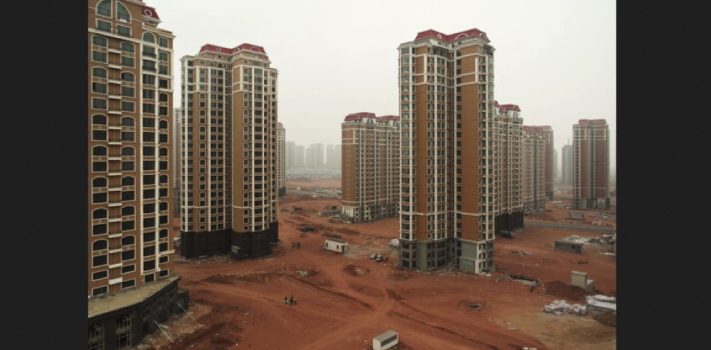Introductory Note: This is an update to a topic that I’ve covered for several years. The gravity of the risk described cannot be overstated.
—
The attention of the world’s financial press seems to have drifted away from incisive finance reporting on mainland China. Last year’s Evergrande and Kaisa crises briefly attracted considerable attention, but given the Chinese Communist Party’s typical press stonewalling, journalists naturally began to concentrate on other news. The media spotlight may have shifted, but the systemic risk in China has not subsided. There is still a huge risk of both a general banking collapse and a credit derivatives meltdown that could extend beyond China’s borders.
In recent weeks, there have been more signs of a potential financial disaster in China. In October of this year, Country Garden failed to meet a dollar bond payment obligation. And in November, Reuters reported:
“Local governments in China have sold record amounts of so-called special bonds this year to inject capital into struggling smaller banks, as authorities seek to contain spillover risks from a deepening property crisis and a sputtering economy.”
That was $21 Billion worth of “special bonds.” (That is China-speak for: Emergency stopgap funding.)
And in November, Fortune reported: China’s real estate crisis has helped punch a $37 billion hole in the balance sheet of one of the country’s largest shadow banks.]
A Stone Wall of Silence
The full depth of China’s banking crisis is still concealed. I’ve done my best to warn SurvivalBlog readers about this in 2021 and in 2022. The concealment of the magnitude of this crisis is attributable to:
- China’s labyrinthine institutional structure.
- China’s unique “The Way We Do It in China” banking regulations.
- China’s opaque board meetings.
- China’s non-adherence to Generally Accepted Accounting Practices (GAAP) reporting.
- And China’s derision of financial press reporters.
In effect, a New Great Wall of China surrounds its banking empire. It is a stone wall of silence.
The Ghost Cities
For more than two decades, massive malinvestment has created numerous empty, or nearly-empty Ghost Cities. (There are many other reports on this, and one report even tried to quantify it, in scientific terms.) It has been estimated that there are now at least 64 million empty apartments in China. A lot of these are just dark concrete shells that have never had doors, windows, or electrical service installed. These ghost cities were largely funded by millions of individual workaday Chinese investors who are now left holding the bag. We are talking about cavernous uncompleted building projects that will never turn a profit and may never even be occupied.
Mainland China’s financial debacle is far from over, and again it is largely under-reported. Most of this mess stems from Maoist central planning, corruption, and pie-in-the-sky project malinvestment. The Chinese Communist Party (CCP) is famous for concealing derogatory information from the press. They treat the press corps like a mushroom farm. (That is to say: Kept in the dark, and provided with copious horse manure.)
Global Contagion?
Pay Attention, Folks: China’s ongoing crisis could spiral out of control, and create a global contagion, with powerful reverberations throughout banking, credit derivatives, and even in private equity. As I’ve mentioned before, I can foresee that China’s shady banking practices might someday have profound effects on credit markets, the construction industry, construction-related commodities, the housing markets in many nations, and perhaps even national currencies. The best-case scenario is an exacerbation of credit market interest rate swings. The worst-case is a global credit meltdown. – JWR










